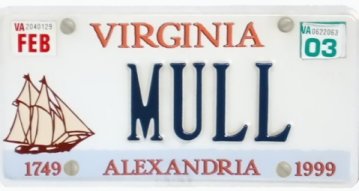



What's French for Restaurant?
Here's a bad idea: Go to Paris in the middle of the Thanksgiving-to-Christmas-Weight-Gain season. Your first stop upon returning will be to go to Nordstrom's to buy a pair of pants -- one pair of pants -- with a waist which is a higher number than the length.
That means you have to put your pants on sideways. No it doesn't. It means I have to put my pants on sideways.
The trick is to only purchase one pair. If you buy one then you are dealing with a temporary crisis. If you buy two or more you have admitted that (a) you are fat and (b) you are going to stay fat.
By the way the word "restaurant" is French.
Ok. So, let's talk food. No matter where you travel, domestically or in a foreign land, food is the most dangerous part of the trip. I'm not talking just about drinking the water in India - or even looking at the water in India - I'm talking about eating in restaurants anywhere outside your home area.
In every land guidebooks will tell you what to see, when to see it, how to get there, and what it will cost. If I didn't know my way around Washington, DC, I would certainly find out about the monuments, the Smithsonian Institution museums, the Capitol, the Library of Congress and the White House.
I would not, however, know where to eat.
Even though guidebooks recommend restaurants, too it isn't the same. Owners change. Chefs change. There are good nights and bad nights. You can't know. You also can't know if there is a truly wonderful restaurant just around the corner from the guide-book-recommended place which is twice as good at half the price, but the locals don't talk about it because - well, because they don't want you and your kind crowding in.
So, the only answer to eating is the same as the only answer to sailing into a narrow and/or shallow anchorage: Local Knowledge.
Here was my eating schedule:
Thursday Lunch: with Ambassador Phillips at a bistro on the Rive Gauche the name of which I forgot to record although the locals say that Ernest Hemingway, et. al. used to sit in there waiting for either acceptance checks or rejection notices. I assume it is not where Papa learned to shoot.
Thursday Dinner: 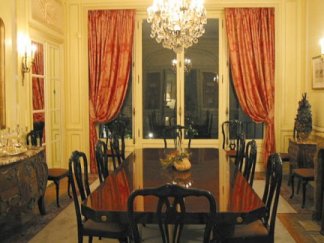 In this room with the Ambassador and David Phillips at the Ambassador's Residence. There is a full-time chef who uses only fresh ingredients and cooks everything from scratch. While I was there the Ambassador's daughter, who is eight, needed some items for the school bake sale. The Ambassador and the daughter dutifully made cupcakes (which are more-or-less unknown in France anyway) from a Betty Crocker cupcake mix purchased at the American Embassy commissary.
In this room with the Ambassador and David Phillips at the Ambassador's Residence. There is a full-time chef who uses only fresh ingredients and cooks everything from scratch. While I was there the Ambassador's daughter, who is eight, needed some items for the school bake sale. The Ambassador and the daughter dutifully made cupcakes (which are more-or-less unknown in France anyway) from a Betty Crocker cupcake mix purchased at the American Embassy commissary.
We are told that chef smiled one of those tight French smiles though out the process.
The dinner was broiled chicken breasts with pasta and red sauce, salad, red wine (at my request), sliced fresh fruit and café crème for dessert. Café crème is coffee with milk. It is the Paris equivalent of a Grandé Latté at Starbucks.
Friday Breakfast: Café crème with a baguette in my room while I dressed to accompany the Ambassador to the OECD Mission.
A baguette is a - well, it is what you know as French Bread which is exactly the same as Italian Bread with a crunchier crust. Another name for Italian Bread is a sub roll. Get it now?
Baguettes are the staple of French breads. At least in the places I ate. I did not, on dinner tables, see any examples of what, in Ohio, we used to call: Wonder Bread.
By the way, on the bablefish web site which offers translations from and to English and a number of other languages (and upon which I depend heavily) the word baguette translates to: "rod." I don't know why I think that's funny. But I do. I will leave the high school sophomore baguette jokes to you.
Friday Lunch: With friends Zabelle and Werner Huss with whom I stayed for two nights. For my second-day lunch, they took me to a neighborhood bistro called, Scossa which is on the Place Victor Hugo and so available to tourists, but clearly caters to the neighborhood clientele.
Friday Dinner: Jeanne and David Phillips and I went to a small bistro which is one of a number of such restaurants owned by major chefs with major, MAJOR restaurants elsewhere.
There is a tradition for the big five or six chefs to have one or two smaller restaurants where they can prepare and serve dishes apart from the ones for which their main restaurant might be famous. Emeril Lagasse does this in New Orleans. He has several restaurants, each with a different look and feel.
The next day, Saturday, was my walk-about day so I avoided by breakfast and dinner knowing that damage was going to be done that night.
Saturday Dinner: This was a big one. The Huss' and I were invited for cocktails at the Ambassador's Residence. We were joined there by a couple named Barbara and Tom McDuffie. The McDuffies used to be our over-the-back-deck neighbors until they moved from Alexandria, Virginia. Pictures of all later.
After some wine and wonderful conversation we bade farewell to the Phillips and went to a restaurant called d'Chez Eux which means, more or less, "In Their House."
The five of us ate the equivalent calories of all the yellow bags dropped in Afghanistan since that process began.
The two big winners were Duck Confit (Con-FEE) and Pâté de Fois Gras. Duck Confit is duck cooked in its own fat. One recipe I found called for 16 duck legs and "2 kg of chicken/duck/goose fat."
Here's a good travel tip: When your friends take you to their favorite restaurant and the chef comes out to chat, do not make the mistake of thinking 2 Kg means "Two Kegs."
You will try to pretend it was just (a) a joke or (b) a flashback to your college days but the chef (who is armed with many, many sharp implements) will give you that tight smile usually reserved for eight-year-old girls making pastries from a Betty Crocker box in his kitchen.
Here's how the Food Channel web site says to prepare this dish:
Preheat oven: 300 degrees Season duck legs with herbs, garlic, salt and pepper. Place into roasting pan and cover completely with duck fat [emphasis mine]. Roast 2 1/2 hours. Remove legs from fat and place back in oven long enough to crisp skin.
Now, you might be interested in knowing how to render the duck fat so as to have enough to cover the legs. Your full-service Travelogue provides:
Rendering Duck Fat (from the Discovery Channel web site)
Pull the yellow fat away from the skin and meat of the duck and put it in a heavy medium sauté pan or skillet. Cook slowly over low heat, letting the fat melt. When all the fat has drained away from the tissue and the tissue is brown and crisp, strain the fat through a fine-meshed sieve or cheesecloth into a small heat-proof bowl. Use immediately, or let the fat cool, cover and store in the refrigerator.They, of course, missed an important preparatory step: First call the cath lab at your nearest hospital and alert them to the fact you will be coming over, first thing in the morning, for an angioplasty.
This is not the worst. This is the worst: Pâté de Fois Gras. This is pronounced "Patt-AE de Fwah-Gwah."
What do you want from me? It's Fwench.
This is duck liver which has been operated upon in a food processor until it is just shy of liquefying. If you search the internet for Pâté de Fois Gras you will get a million pages by animal rights groups as to the horrors of force feeding ducks to make their livers grow, just so you, you meat-eating troglodyte, can have it cooked, processed, mixed with truffles, and served with a fresh baguette.
I don't care. Both the duck and I will die from the experience, but one of us will have died happy. This is one of those foods which is so good it, literally, will make your eyes water.
If you have never had this dish, have it at least once (at a restaurant a local person has recommended) but make out your will first. There is no amount of red wine and/or Statin drugs which will offset the damage this stuff does to your arteries.
Nevertheless the meal was wonderful and so filling that when Zabelle and Werner took me to breakfast the next morning I had all I could do to drink a cup of coffee. I was saving myself for lunch.
Sunday Lunch: I traveled to the Rive Gauche to visit the McDuffie's at their flat. They took me to a famous eatery: the Brasserie Lipp (pronounced "LEEP"). The Lipp is another one of those restaurants which is along a big street but, when locals come in, treats them as if it is a neighborhood restaurant off the beaten-path.
When we walked in, the staff recognized the McDuffie's and, after a good deal of shrugging, and sighing; conferences amongst themselves, and staring off into space; they sat us.
I can't tell you what I ate here because the Mullings Director of Standards & Practices would have allowed me duck confit and even a taste of fois gras, but she would never have permitted a dish which included several kinds of sausages, several different flavored hunks of ham slices on a bed of cabbage with French mustard. So, suffice it to say this was yet ANOTHER restaurant in which I wanted to sleep over.
Sunday Dinner: The highest and best use of local knowledge when it comes to food is when a local invites you over for dinner. On Saturday night the traveling squad of Werner & Zebelle Huss, Tom & Barbara McDuffie, and the Mullster gathered at the Huss' flat for a simple, but breathtaking, spaghetti and meat sauce dinner.
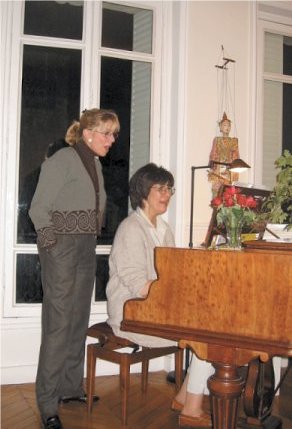
Here are Zabelle & Barbara singing "Our Love Is Here To Stay" by George & Ira Gershwin; a featured song in the 1951 movie "An American in Paris" which starred Leslie Caron and Gene Kelly. "An American in Paris" was, first, the title of a major piece by Gershwin which followed his success of "Rhapsody in Blue."
I bring all that up because they really were singing that song and "An American in Paris" happened to have been on TV as I am writing this.
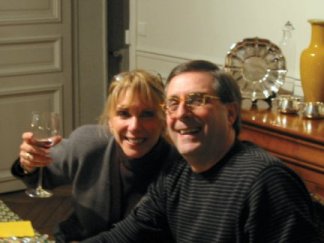
This is Tom and Barbara after the concert.
Werner Huss.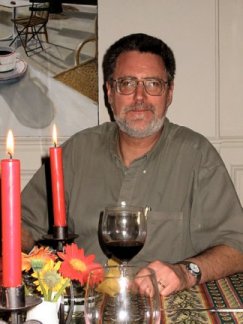
And our hostess; writer, painter, musician, and singer:
Zabelle Huss.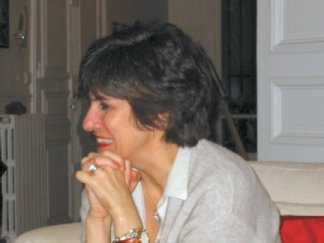
A very nice night, with some very, very nice people.
---
On Monday morning, Werner drove me to Charles de Gaulle airport for the trip home. I had already resigned myself to the notion that I would be flying home, as I flew over, in coach. But I had thought that I would be able to await that fate in the Air France airport club.
Delta and Air France are two members of what is known as "Sky Team." The other two members are Alitalia and Czech Airlines. Their marketing materials make a big deal about how you can travel almost seamlessly on any one of these airlines when you book on any of the others.
Well, if that's true then if Sky Team were a Basketball Team the visitors would have to dress on the court.
I walked into the Air France club with the aplomb of someone who is (a) a member of the Delta Crown Room club, (b) has just survived four days in Paris, and (c) is about to reach Platinum status.
I might as well have been a first-time flier with my luggage in a hefty leaf bag.
Sky Team seamlessness does not extend to my using the Air France club.
I had a café crème at one of the restaurants and awaited the boarding process.
Here is what the rear coach cabin looks like on a 777 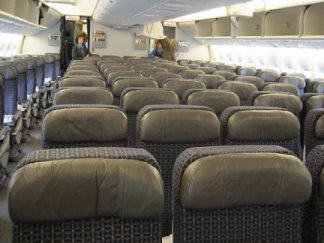
After everyone boarded I walked up to the Business Elite section to see how full it was. In the last row alone (which is two-two and two) there were four empty seats.
The trip from Paris to Cincinnati took about an hour longer than the other way because we were flying uphill all the way. I read somewhere that those in-seat power adapters were available to run your computer in all seats in all classes on a 777. This would be not true.
However, I was seated in a bulkhead on the two seat side and the seat next to me was empty so all was well.
I left Paris at about 11:00 am European time, five AM Eastern. I got home at about 10:00 PM Eastern.
But here was the payoff:

TaDa!
Copyright © 2001 Richard A. Galen